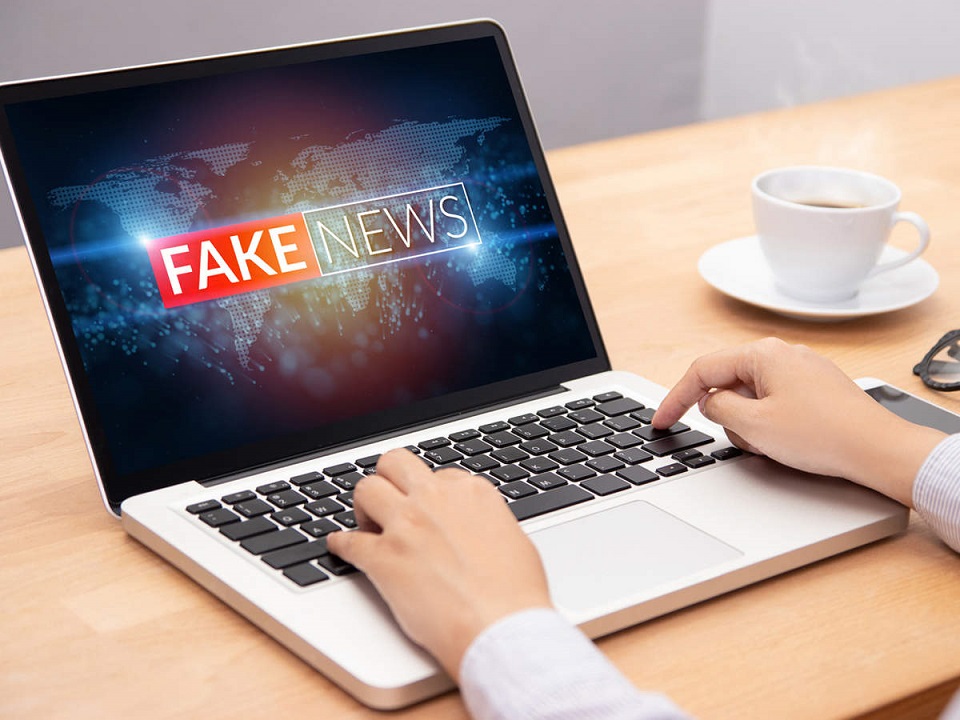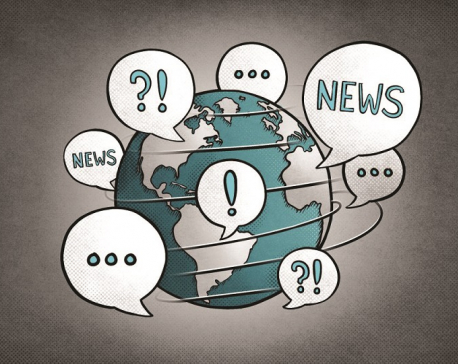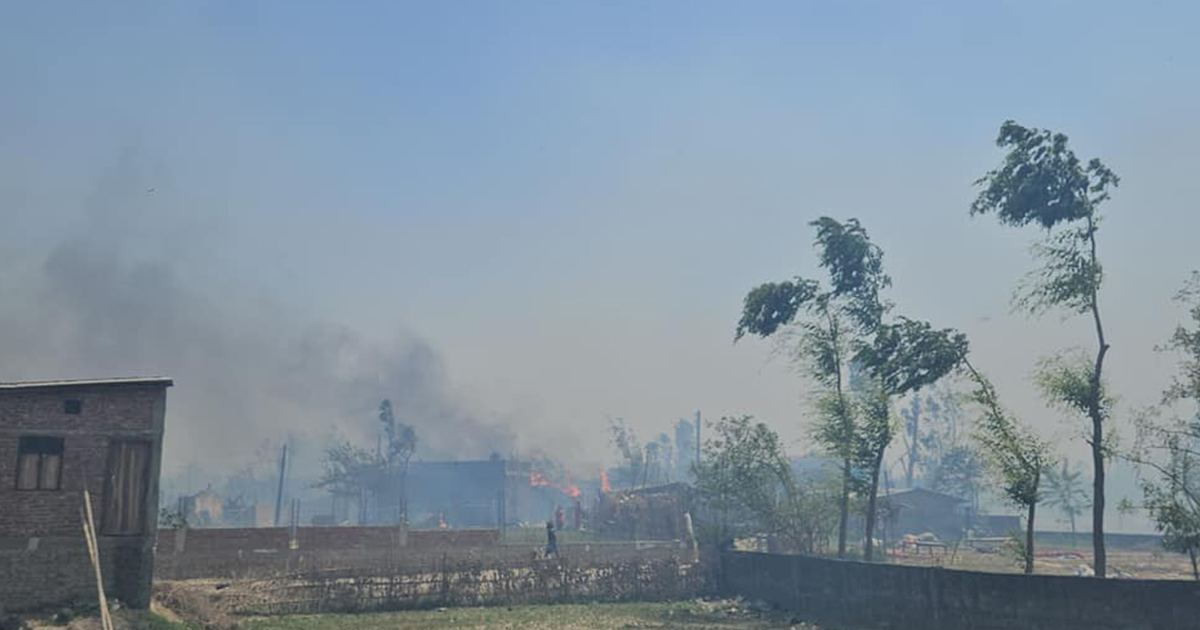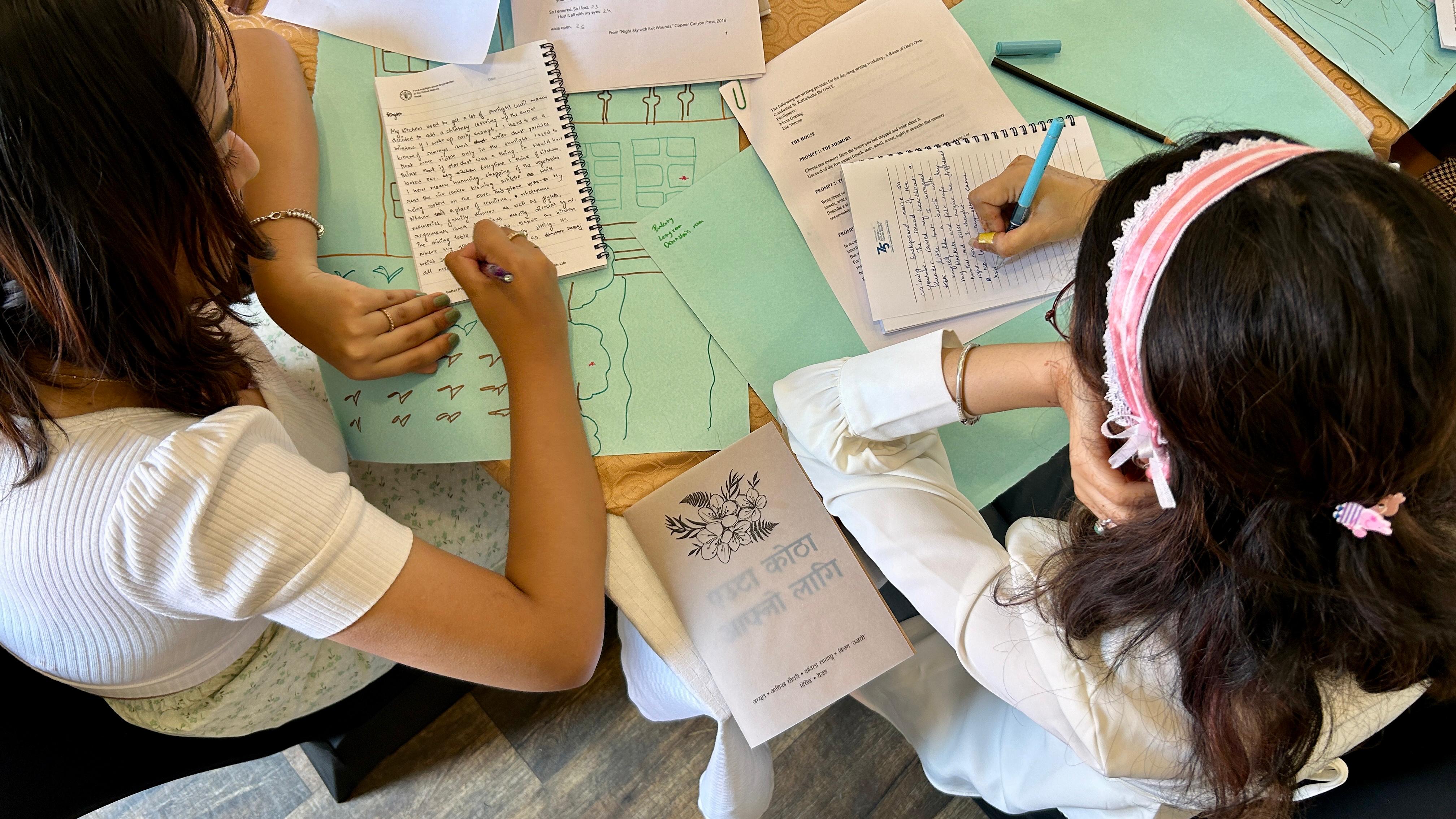
OR

Fake news spreaders first figure out what the news consumers think and then they spread the fake news that reinforces their preconceived notions
When I was a college student in the early 1990s, the daily bus ride was fun and oftentimes a curious event. Among the regular beggars, singers and pickpockets encountered in the buses and bus terminals were the hawkers for newspapers, cheap magazines, and booklets. They would mix the names and surnames of the people in petty news and try to create the name of a leader or a celebrity. Then they would shout about the fabricated event. If they shouted 'Bhattarai is dead’, people would buy their stuff and would end up realizing that someone called Bhattarai had died in a hospital or a road accident. They mixed common events such as death, marriage, divorce, and illness with the names of the bigwig to create a sensation. But the prospective reader first thought about some big personality and bought the item. By the time they realized, the hawker would have exited the bus and the bus itself would be 3-4 stations down the route. An example of classic, non-digital, pre-internet, pre-social media fake news.
Fast forward three decades and the fake news phenomena are astronomically bigger in its scope, coverage and social implication. Nowadays, rumors are spread, elections are manipulated, people are radicalized and whole proxy wars are waged through the spread of fake news. Lives are lost, societies are torn apart, governments are toppled and ideologies spread through the dubious means of fake news and propaganda. And there is the lightning-fast medium called the Internet that can instantly carry a sensational fake news piece created in one part of the globe to all over it.
Why we believe in fake news
Human psychology is a complex mechanism. It gets matured, updated and complicated with growing age and increasing social interactions. Psychologists including the pioneering Sigmund Freud agree that our lives as human beings are a constant negotiation between our expectations and worldly realities. We tend to seek pleasure and happiness, even at the expense of others. While we have a natural tendency of being happy at our own accomplishments, we also seek happiness outside, often in the failures or challenges of others. While we get a pang of jealousy at a good post or pictures of others on social media, we ourselves tend to create made up and amplified events for social media. Since this mentality is a pervasive human nature, there is a constant struggle on social media to create a piece better than others so that we get most ‘rewards’ in the form of eyeballs, clicks, likes, and retweets.
This human psychology of reveling in the failure or challenges of others is exploited to the full by the fake news protagonists online. Suddenly, they have got a medium that is world-pervasive and also very fast. And they tend to use that unprecedented medium to rapidly spread their ideas, albeit fake and baseless.
Another important psychological aspect is called ‘confirmation bias’. According to the ‘Psychology Today’ website, the confirmation bias is our tendency to believe that information that reinforces our preconceived notions. This is at play in fake new influences in election campaigns, the rumors of child abductors seen in India or even recent rumors regarding the cure, symptom, and treatment of the coronavirus pandemic. Many 5G towers in the UK were set on fire based on rumors that they spread coronavirus. If people in one of the most advanced countries can be fooled by such nonsense, fake news and rumor mill can brew any level of mistrust, unrest, and social disorder.
Fake news spreaders first tend to figure out what the news consumers think and then they spread the fake news that reinforces their preconceived notions, though the news is not founded in facts at all.
It travels fast
Even normal, non-fake news is mostly based on negativity. The news of wars, disasters, terrorism, famines, disputes, and struggles find precedence over the news of peace, reconstruction, altruism, compromises, and blissful happiness. As the human tendency is to seek others’ distress to feel happier and better positioned, people are attracted to bad news. We feel happy if someone we know, usually a politician or a celebrity, suffers a gaffe or is lampooned or criticized. Our inner feeling of inferiority at being a commoner and not like those celebrities is neutralized by the news of the failures of those icons. And we tend to share that euphoria with others. We tend to share bad news about others more than good news about ourselves, let alone others. It is like that famous Indian tale of Akbar and Birbal in which the shrewd minister Birbal makes a line shorter or longer without touching it. We want to feel happy without changing our current situation. The way that is possible is by making others look to be in more trouble than ourselves. When it comes to such a tendency to seek other’s problems, we rarely test the veracity of that information. If it is bad or at the peril of others, we tend more to believe than question it. And we tend to share it over social media, just to amplify that feeling of euphoria for ourselves. Hence, bad news, albeit fake, travels fast over social media.
On August 25, 2018, BBC reported that more than 25 people had been lynched by mobs across India after reading false rumors on the messaging platform WhatsApp. The rumors about the strangers stealing small children were so widespread that angry mobs attacked and mercilessly lynched strangers, leading to so many deaths and countless other injuries. This is a stark example of a society on the edge, triggered into violence by fake news and irresponsible use of the Internet. The same BBC report outlined many other less deadly rumors ranging from those about the death of Mr. Bean actor Rowan Atkinson to virus infections, free tickets, three-headed snakes or fake job adverts. All these pieces were exploiting the mass mentality of believing bad news, without trying to verify their veracity.
In September 2017, CNN published a report on a thriving fake news trade in Macedonia. The shrewd youngsters were creating plagiarized and manipulated news clips about US elections and posting their links on fake Facebook profiles with a large base of followers. The links took the visitors to the fake news websites where the advertisement providers such as Google’s AdSense would put advertisements. Those advertisements create a small sum of money (fraction of a cent or more) for each click. When the related social media profiles have hundreds of thousands of followers, the clicks add up and the content creator ends up getting a handsome sum of money. A really controversial fake story is wildly shared on social media, leading to incomes of up to $2500 for the creator. That hefty sum of money would draw any enthusiast into the trade, especially when the law of the land is not being broken. That is the heart of the problems.
Challenge for News Media
The pervasive nature of fake news has given a good pretense to politicians and other people to brand specific news outlets as sources of fake news if the latter are not in the same political and ideological trajectory as the former. This has also led to heightened polarization and partisanship in news media, especially in the political spectrum. One group brands the media associated with the other group as fake news and vice versa. This might be a good ploy for the partisans but it is baffling for the wider populace. There is a breach of trust and confidence among the general public regarding the news they are regularly bombarded with by the media. People are bombarded with mutually conflicting and contradictory news and view on television, print, online and social media. That makes the wider population lose their trust in news, even that from the top brands or outlets.
Trust is the benchmark of information, especially of news. Once that trust is breached, it becomes very difficult to regain it. For the consumer, it creates a dilemma about what to trust and what not to. For societies based on civil liberty and free speech, dissemination of unfounded news designed to sway public opinion leads to mistrust, confusion and blatant violation of the freedom of expression.
At a time of crisis, scaremongers and rumormongers on the Internet also start profiteering. It is analogous to hoarding critical supplies for black market sales. Recent example of large scale confiscation of masks illustrates this mindset among criminally profit-oriented thugs. Internet news and information also suffers from a similar malady. From unfounded rumors regarding treatment of a pandemic to the result of an important election, the online profiteers tend to exploit times of uncertainty, tumult and instability to spread false information, influence public opinion and make money from the increased volume of clicks and views in their content, drawing lucrative advertisements, similar to the lucrative illicit business created by the Macedonian fake news creators.
Fighting back
Fake news thrives on the lack of awareness about facts and the human tendency to believe what they want to believe or confirmation bias. The best way to avoid falling prey to fake news is to fact-check and verify what is presented. But this is something a lot of people do not or cannot do. A piece published online by the Harvard Summer School identified four tips for spotting and stopping fake news. The first tip involves vetting the credibility of the publisher including the organization name, domain name, the publisher’s point of view and even the name of the publisher. A lot of fake news is spread through fake social media accounts. The Macedonian fake news herder interviewed by CNN was talking about using the Facebook profiles of children who are easily convinced to share their profiles for small gifts. The second tip is to pay attention to the quality and timeliness of the news. Easily spotted errors such as spelling, sentence structure, small-CAPITAL correctness are some errors seen in items hastily prepared by novice writers.
Another indicator is whether the news is current or recycled based on a past event. The third tip is to check the sources and citations in the news article. If the sources are not cited or those cited cannot be verified, the news can be considered fake. The fourth tip provided by Harvard Summer School is to take advice from experts. This can be useful for corporates, governments, and other institutions.
It is useful to be able to spot fake news. This helps limit the damage and also curb further spread as people would not share a piece that they themselves do not believe in. The newspaper, magazine and booklet hawkers in the streets and buses 30 years ago would relish the platform provided by the Internet today. Sitting in their room, they would be able to manufacture, manipulate and monetize their fake stories, using fake identities and fake sources so that they would be able to reap the benefits without being accountable. Elections in one hemisphere are influenced by a few social media campaigners in another. People in one city are being killed based on rumors spread by people in other cities using their handheld devices. Fake news spread like wildfires and influence elections, change government policies and, at their extreme, result in loss of lives. And it is much easier to fall prey to the fake news machinery in times of uncertainty and fear such as now due to COVID-19. The best antidote to this Internet malady is to be aware and develop a habit of cross-verification and fact-checking. As a user, responsible use of online facilities can also limit the damage and minimize the spread of fake news.
You May Like This

Journalism as Public Good
In a world where misinformation and fake news can spread quickly, it's obligatory for journalism — also identified as the... Read More...

Those spreading fake news about COVID-19 to face legal action
KATHMANDU, March 31: At a time when the market is rife with fake news and rumors about COVID-19, the government... Read More...

'Fake news a big challenge for media'
KATHMANDU, Dec3: Media entrepreneurs as well as media persons have said that fake news has been a major challenge seen... Read More...





Just In
- 104 houses gutted in fire in Matihani (With Photos)
- By-elections: Silence period starts from today, campaigning prohibited
- A Room of One's Own- Creative Writing Workshop for Queer Youth
- Tattva Farms rejuvenates Nepali kitchens with flavored jaggery
- Evidence-Based Policy Making in Nepal: Challenges and the Way Forward
- Insurers stop settling insurance claims after they fail to get subsidies from government
- Nepal-Qatar Relations: Prioritize promoting interests of Nepali migrant workers
- Health ministry to conduct ‘search and vaccinate’ campaign on May 13














Leave A Comment